Yes, dogs can eat beef heart. It’s rich in protein, essential amino acids, B vitamins, and taurine, supporting heart health and muscle growth. It also provides omega-3 fatty acids for a healthy coat. Introduce it gradually and ensure it’s from a reputable source. Before making any changes to your dog’s diet, it’s important to always seek advice from your vet.
Can Dogs Eat Beef Heart and Its Nutrition?
Beef heart is not just a tasty treat; it’s a powerhouse of nutrition for your canine friend. Packed with protein, essential vitamins, and minerals, beef heart offers a myriad of health benefits for dogs, supporting everything from muscle development to heart health. It is particularly rich in B vitamins, iron, and taurine, an amino acid critical for heart function. This can be particularly beneficial for certain breeds prone to cardiac issues. Similarly, beef kidneys, another nutritious organ meat, are also rich in nutrients and provide health benefits similar to those of dogs.
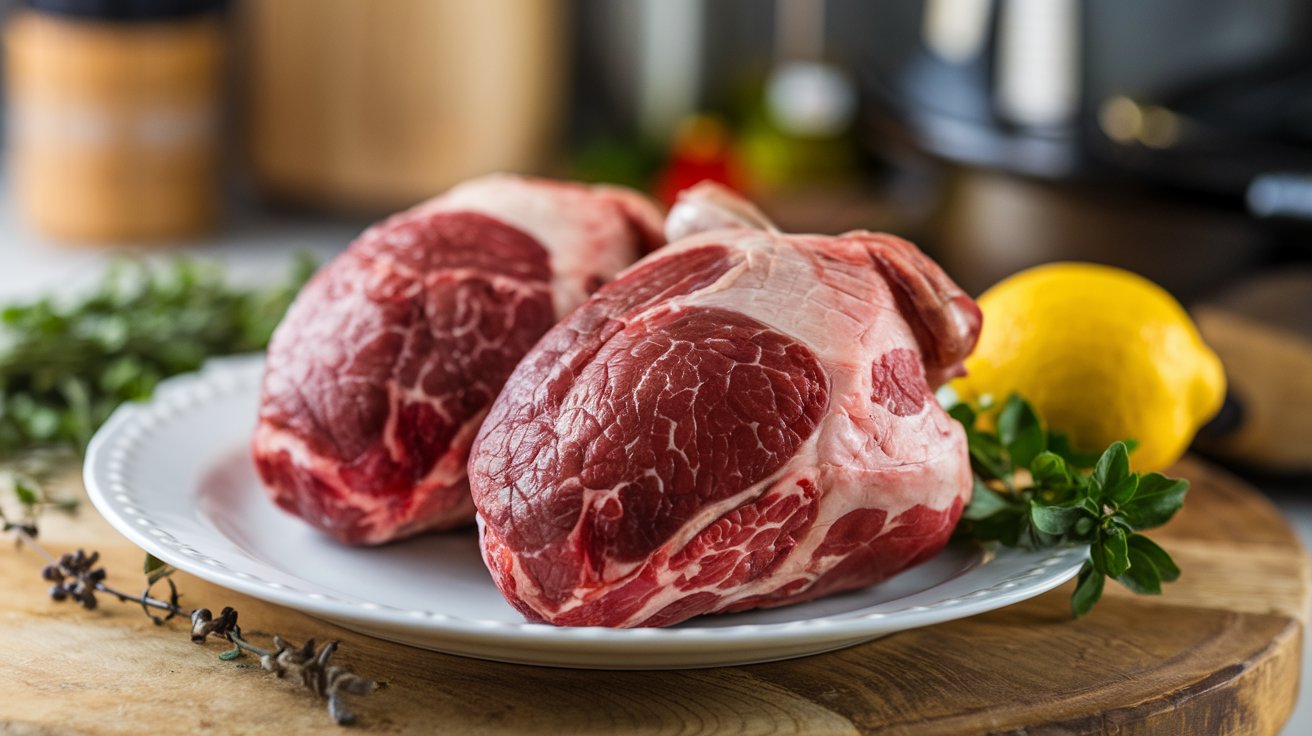
Moreover, the beef heart contains omega-3 fatty acids, which are known for promoting a shiny coat and healthy skin. This organ meat provides more than just basic nutrition—it enhances your dog’s diet with critical elements that support overall well-being and vitality. When considering introducing beef heart into your dog’s diet, it’s important to do so gradually and under the guidance of a veterinarian, especially if your pet has specific health conditions or dietary restrictions.
Nutritional Value and Benefits of Beef Heart
1. High-Quality Protein
- Benefit: The beef heart is rich in high-quality, easily digestible protein. Protein is essential for muscle growth, repair, and overall maintenance of body tissues. This makes beef heart a great option for active dogs or those recovering from illness or injury.
2. Rich in Essential Amino Acids
- Benefit: Proteins are made up of amino acids, which serve as their fundamental building blocks. Beef heart contains essential amino acids like taurine, which is important for heart function, eye health, and immune system support in dogs. Taurine is particularly crucial for some breeds prone to heart issues.

3. Packed with Vitamins
- Benefit: Beef heart is a rich source of B vitamins, including vitamin B12, riboflavin, and niacin. These vitamins play a role in energy production, red blood cell formation, and maintaining a healthy nervous system. They help keep dogs energetic and promote overall health.
4. Source of Iron
- Benefit: Beef heart provides a good amount of iron, which is necessary for producing hemoglobin, the protein in red blood cells responsible for transporting oxygen throughout the body. Adequate iron levels prevent anemia and ensure a dog’s muscles and tissues receive enough oxygen.
5. Contains Healthy Fats
- Benefit: Beef Heart has a moderate amount of healthy fats, including omega-3 fatty acids, which are similar to those found in raw beef fat, another source that can benefit dogs when prepared appropriately. These fats help maintain healthy skin, coat, and joints.
6. Low in Calories and Fat
- Benefit: Compared to other organ meats like beef liver and beef kidneys, beef heart is relatively low in calories and fat. This makes it an excellent option for dogs who need to maintain a healthy weight while still getting plenty of nutrients. It is leaner than typical beef cuts but still nutritionally dense.
7. Great Source of CoQ10
- Benefit: Beef heart is one of the best natural sources of Coenzyme Q10 (CoQ10), an antioxidant that supports heart health and cellular energy production. CoQ10 helps maintain cardiovascular health and benefits dogs with heart disease or those at risk of developing it.
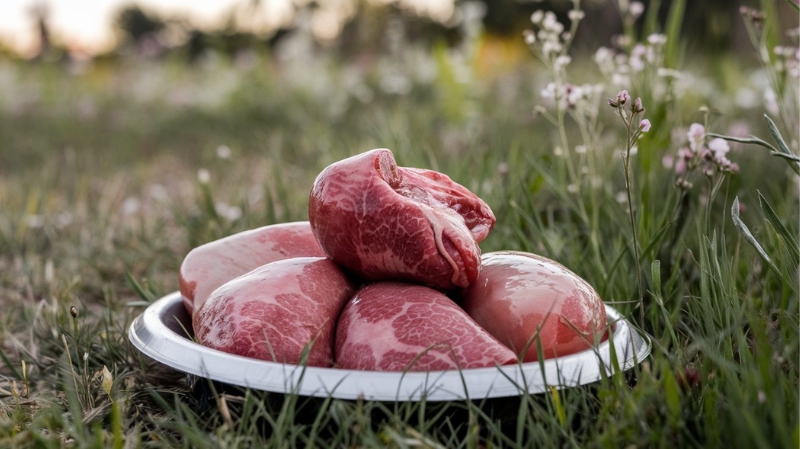
Table of Vital Nutrients and Benefits in Beef Heart
| Nutrient | Amount per 100g | Benefits |
|---|---|---|
| Calories | 112 kcal | Provides energy |
| Protein | 17.72 g | Essential for muscle synthesis and repair |
| Total Fat | 3.94 g | Supports cell growth and provides energy |
| Saturated Fat | 1.38 g | Necessary for hormone production |
| Monounsaturated Fat | 1.14 g | Supports heart health |
| Polyunsaturated Fat | 0.55 g | Reduces inflammation and supports brain function |
| Cholesterol | 124 mg | Important for cell membrane structure |
| Sodium | 98 mg | Regulates blood pressure and volume |
| Potassium | 287 mg | Maintains fluid balance and supports muscle contractions |
| Carbohydrates | 0.14 g | Provides minimal energy |
| Iron | 4.31 mg | Crucial for oxygen transport in the blood |
| Zinc | 3.5 mg | Supports immune function and wound healing |
| Selenium | 36.5 µg | Plays a role in metabolism and thyroid function |
| Vitamin B12 | 8.2 µg | Essential for nerve function and DNA production |
| Vitamin B2 (Riboflavin) | 0.3 mg | Important for energy production and cellular function |
| Vitamin B6 | 0.4 mg | Supports brain health and helps in the creation of neurotransmitters |
| Coenzyme Q10 (CoQ10) | 2.6 mg | Supports cardiovascular health and energy production |
For more detailed information, please refer to the following sources:
- Dr. Robert Kiltz’s article on Beef Heart Nutrition and Benefits
- FatSecret’s nutritional facts on Beef Heart
How to Safely Prepare Beef Heart for Dogs
Preparing a beef heart for your dog involves a few crucial steps to ensure safety and maintain its nutritional value. Here’s how to do it right:
Cleaning
Begin by thoroughly rinsing the beef heart under cold water. This helps remove any blood and impurities that may be present on the surface.
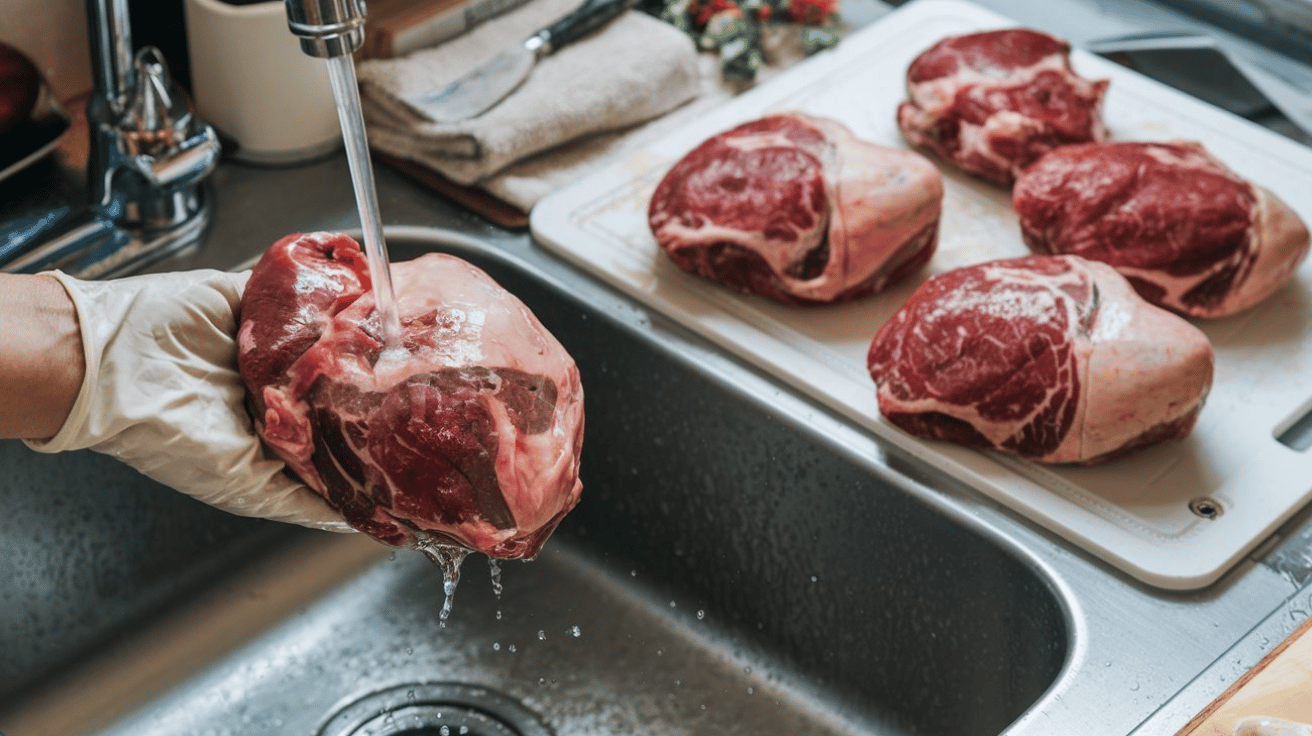
Trimming
Remove excess fat and any connective tissue. While beef heart can be fatty, managing the intake of raw beef fat is crucial because, although an important part of a dog’s diet, excessive fat can lead to digestive issues and unnecessary weight gain. Moderate amounts of fat support a healthy coat, skin, and joint function without overburdening your dog’s system.
Cooking Method
Boiling or baking beef heart is the best preparation method for your dog, similar to how raw chicken bones and raw chicken drumsticks should be carefully prepared to ensure safety. These cooking methods preserve most of the nutrients and eliminate harmful pathogens that might be present in raw meat, making them safer and healthier options compared to feeding raw. Proper cooking is especially important for bones and organ meats to avoid potential health risks such as bacterial contamination or choking hazards.
- Boiling
Simply place the beef heart in a pot of water and boil it until it’s thoroughly cooked. It’s crucial to avoid adding any seasoning, salt, or spices, including popular seasonings like Tajin, which can contain ingredients that are not suitable for dogs. Dogs’ dietary needs are different from humans’, and even small amounts of certain seasonings or salts can pose several risks to canine health, such as sodium poisoning or digestive upset.
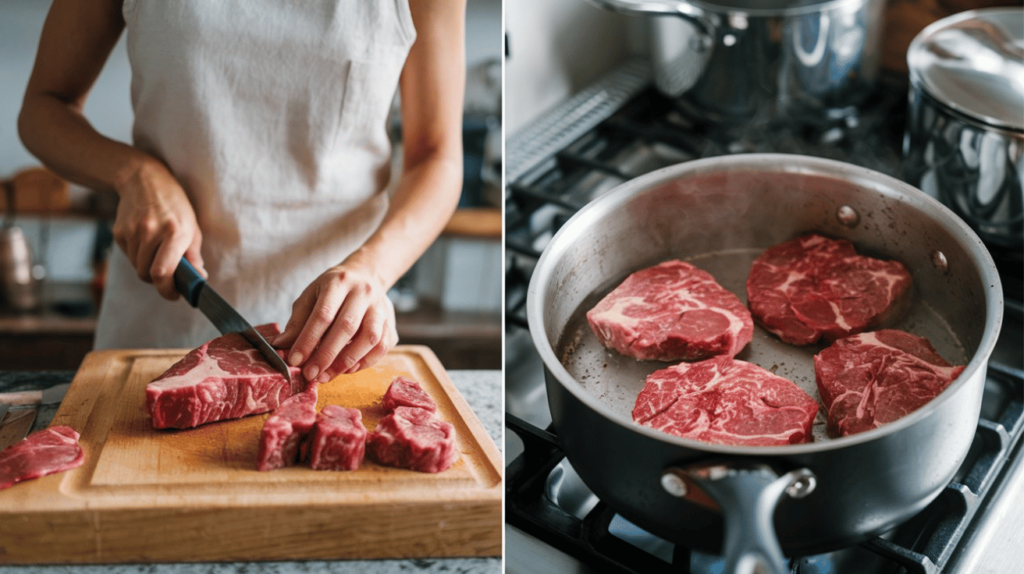
- Baking
You can also bake the beef heart in an oven set at around 350°F (175°C) until it’s cooked through. Again, no seasonings or oils should be used, as these can upset your dog’s stomach.
Serving Size
Once cooked, let it cool down and cut it into manageable pieces appropriate for your dog’s size.
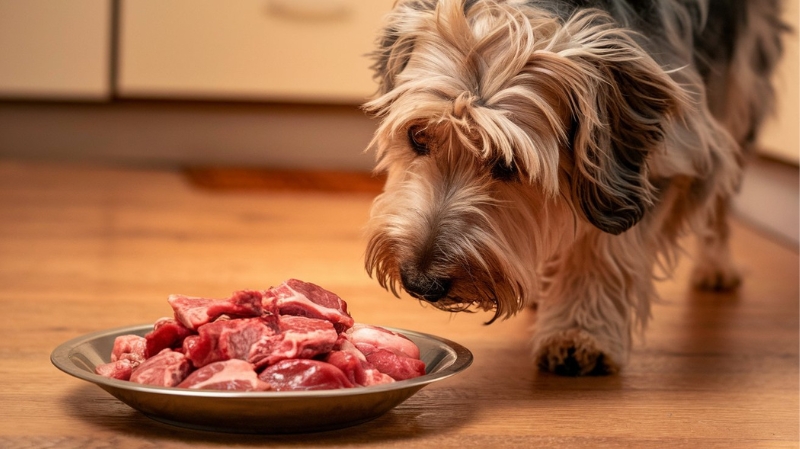
Storage
Any leftovers should be stored in the refrigerator and used within 3 to 5 days. You can also freeze cooked beef heart for longer storage, much like other frozen meats, which, when properly stored, can preserve freshness and nutritional quality. However, be cautious of freezer-burned meat, as it can lose some of its nutritional value and become less palatable, which might make it less appealing to your dog. Thaw the beef heart as needed to ensure it retains its beneficial properties and remains safe for your dog to consume, avoiding any compromise in quality or safety.
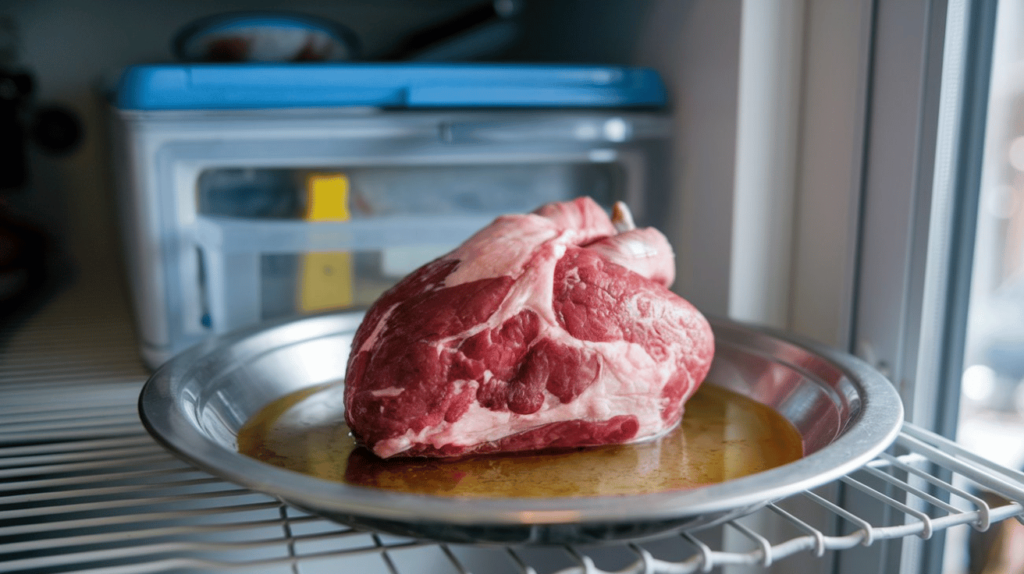
Avoiding Spices and Fats
When preparing beef heart for your dog, it’s crucial to cook it plainly, without any added spices, seasonings, or extra fats, such as tajin, raw beef fat, or oils. Tajin, a popular seasoning blend, is tasty for people but contains ingredients like chili peppers and lime that could upset a dog’s stomach. Similarly, Be cautious with raw beef fat and oils for pets to avoid digestive issues. Dogs have different dietary needs and sensitivities than humans, and these additions can cause gastrointestinal upset or other health issues.

By following these simple steps, you can safely add beef heart to your dog’s diet, providing them with a healthy and enjoyable meal that’s rich in essential nutrients like protein, iron, and B vitamins. This will help support their overall health and vitality, ensuring they get the most out of this powerful organ meat.
How to Safely Introduce Beef Heart into Your Dog’s Diet
Introducing beef heart to your dog’s diet can be a fantastic way to boost their intake of essential nutrients like proteins, vitamins, and minerals. Here is a guide on how to do it safely:
Start with Small Amounts
Initially, beef heart should only make up about 5-10% of your dog’s daily food intake. This allows you to monitor how your dog handles the new food without overwhelming their system. For a dog on a two-cup per-day diet, this translates to roughly 2 to 4 tbs of chopped beef per day.
Gradually Increase the Serving Size
If your dog responds well to the initial servings, you can slowly increase the amount over time. This gradual increase helps ensure that their digestive system can adjust without causing discomfort or allergies.
Introduce as a Treat or Meal Addition
Beef heart can be introduced as a treat or mixed into your dog’s regular meals, much like chicken drumsticks, which can be cooked and chopped for ease of eating. Chopping beef heart into small, bite-sized pieces, similar to how you might handle raw chicken bones, ensures it’s easier for them to eat and digest and helps prevent choking hazards. Both beef heart and properly prepared chicken drumsticks can be tasty treats that pique their interest during meal times, offering a variety of textures and flavors that keep their diet both interesting and nutritious.
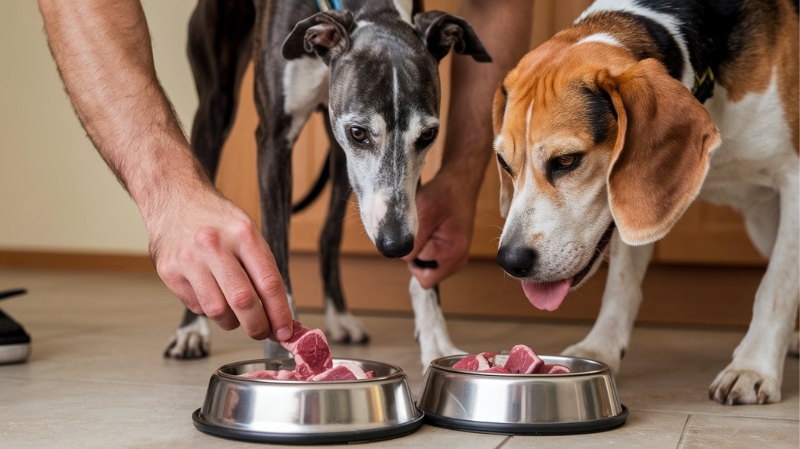
Monitor Your Dog’s Reaction
Observing your dog’s reaction to beef heart is crucial. Look for signs of gastrointestinal distress, such as diarrhea or vomiting, as well as signs of allergic reactions, like excessive itching or hives. If any of these occur, it’s important to scale back immediately and consult your veterinarian.
Appropriate Portion Sizes and Frequency
When incorporating beef heart into your dog’s diet, it’s essential to consider their size, age, and activity level to avoid dietary imbalances. Beef heart, while nutrient-rich, should be introduced as a complement to a balanced diet, not as the sole component.
Guidelines for Portion Sizes and Frequency
| Dog Size | Activity Level | Portion Size (Daily) | Frequency |
|---|---|---|---|
| Small (up to 20 lbs) | Low | 0.5-1 oz | 2-3 times per week |
| Small (up to 20 lbs) | Moderate | 1-2 oz | 2-3 times per week |
| Medium (21-50 lbs) | Low | 1-2 oz | 2-3 times per week |
| Medium (21-50 lbs) | Moderate | 2-3 oz | 2-3 times per week |
| Large (51-100 lbs) | Low | 2-3 oz | 2-3 times per week |
| Large (51-100 lbs) | Moderate | 3-4 oz | 2-3 times per week |
| Extra Large (100+ lbs) | Low | 3-4 oz | 2-3 times per week |
| Extra Large (100+ lbs) | Moderate | 4-5 oz | 2-3 times per week |
Raw vs Cooked: Which is Better for Your Dog?
When deciding whether to feed your dog raw or cooked beef heart, there are several factors to consider that impact both nutrition and safety.
Benefits of Raw Beef Heart:
- Nutrient Preservation: Raw feeding preserves natural enzymes and nutrients such as taurine and B vitamins, which are beneficial for your dog’s cardiovascular health and overall well-being.
- Natural Diet: Many proponents of raw feeding argue that it mimics a dog’s natural ancestral diet, potentially leading to better health outcomes.
Drawbacks of Raw Beef Heart:
- Bacterial Contamination: Raw meat carries a risk of containing harmful pathogens like Salmonella and E. coli. These can be dangerous not just for your pet but also for human members of the household through cross-contamination.
- Dietary Imbalances: Raw diets can be hard to balance properly without expert guidance, potentially leading to nutritional deficiencies over time.
Benefits of Cooked Beef Heart:
- Safety: Cooking beef heart eliminates most harmful bacteria, making it a safer option for your dog and your family.
- Digestibility: Some dogs may find cooked meat easier to digest, which is particularly important for pets with sensitive stomachs or chronic health issues.

Ultimately, the choice between raw and cooked beef heart should be made in consultation with your veterinarian, considering your dog’s specific health needs and your ability to safely handle raw meat. Each method has its merits, and the right choice depends on your particular circumstances and your dog’s health.
Sourcing and Handling Beef Heart for Your Dog
When introducing beef heart into your dog’s diet, sourcing high-quality meat and handling it properly are crucial steps to ensure safety and maximize health benefits. Here is a guide on how to do it the right way:
Choosing Beef Heart
- Quality Matters: Opt for grass-fed beef heart from reputable suppliers. Grass-fed beef is generally higher in nutrients like omega-3 fatty acids and has a better fat profile compared to grain-fed counterparts.
- Reputable Suppliers: Purchase from suppliers known for their high animal welfare and meat quality standards. This can reduce the risk of contaminants and ensure that the meat is as fresh as possible.

Handling Raw and Frozen Beef Heart
- Safety First: Handle raw beef heart with care. Use separate utensils and cutting boards for raw meat to prevent cross-contamination with other foods.
- Storage: Keep raw or frozen beef heart in a sealed container to prevent leakage and contamination in the refrigerator or freezer.
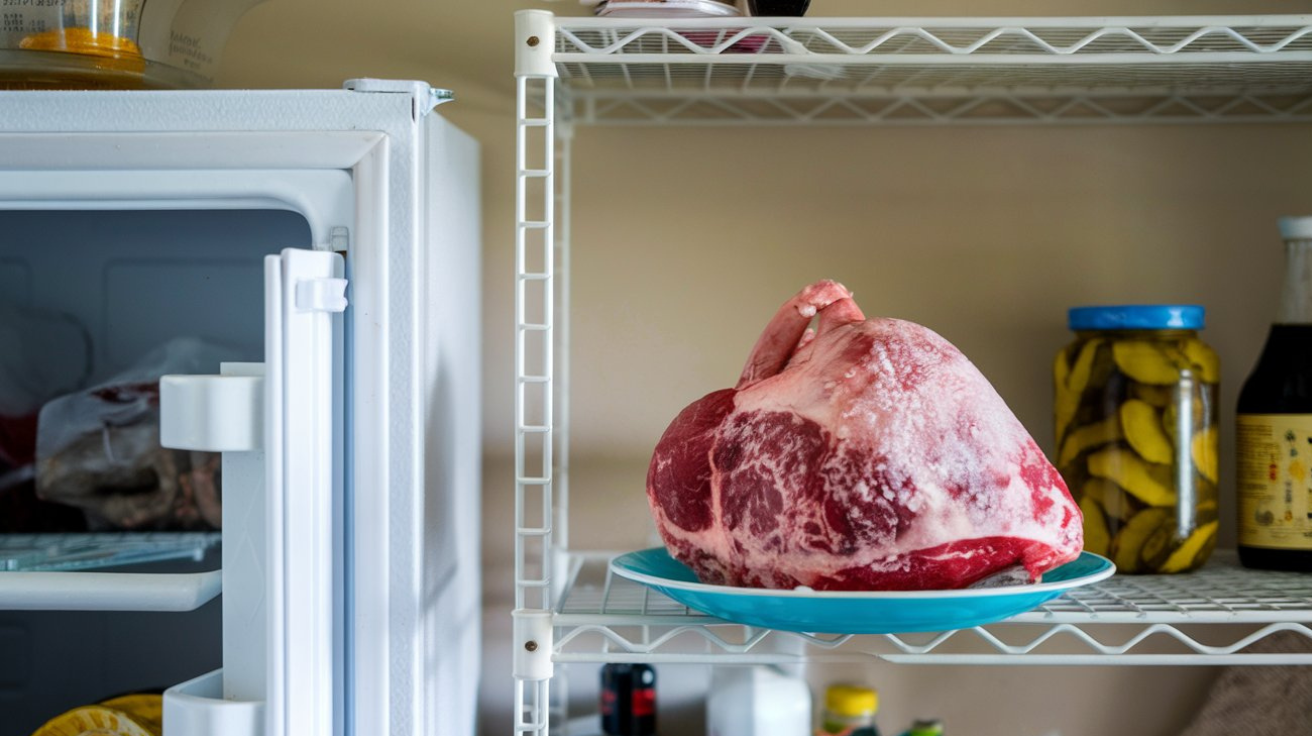
Thawing Beef Heart
- Refrigerator Thawing: Always thaw frozen beef heart in the refrigerator, not at room temperature. This slow-thawing method helps prevent the growth of harmful bacteria.
- Timing: Depending on the size of the cut, thawing in the refrigerator can take anywhere from 12 to 24 hours. Plan ahead to ensure it’s ready when you need it.
Remember, whether you serve it raw or cooked, moderation is key. Introduce beef heart gradually into your dog’s diet to ensure it suits their digestive system and does not cause any adverse reactions. Always discuss dietary changes with your veterinarian to ensure you’re meeting your dog’s specific nutritional needs.
Health Considerations and Risks
Feeding your dog beef heart is generally safe and can be a healthy addition to their diet. However, it’s essential to manage the amount they consume; excessive intake can lead to vitamin A toxicity. For dogs with kidney disease or other specific health conditions, it’s crucial to consult with a veterinarian before introducing beef heart or any new food item to their diet.
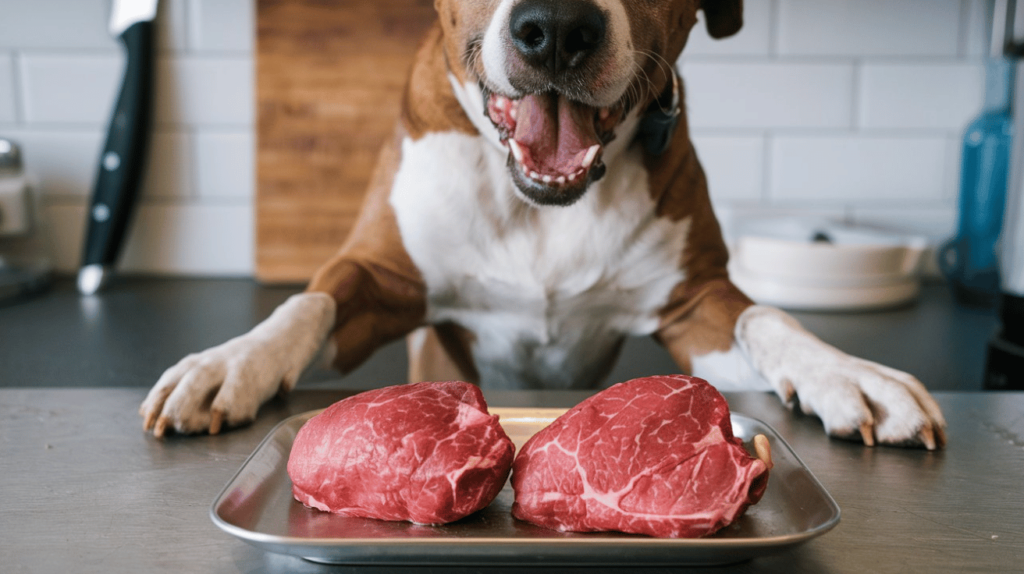
Always handle and store beef heart properly. Like any raw meat, it should be kept refrigerated or frozen and handled carefully to avoid contamination. Preparing it safely minimizes the risk of foodborne illnesses.
Table: Key Health Considerations for Feeding Beef Heart
| Consideration | Recommendation |
|---|---|
| Vitamin A Toxicity | Monitor and limit intake |
| Existing Health Issues | Consult with a veterinarian |
| Handling and Storage | Follow safety guidelines to prevent contamination |
Remember, while beef heart is nutritious, it should be part of a balanced diet. Always observe your dog’s reaction to new foods and adjust their diet to ensure their health and happiness.
Expert Insights and Recommendations on Feeding Beef Heart to Dogs
Here are expert opinions along with links to their sources:
Dr. Karen Becker, DVM
“Beef heart is rich in taurine, which is crucial for heart health, especially in breeds prone to heart disease.“
Source: The Importance of Organ Meats in Your Pet’s Diet
Dr. Jean Dodds, DVM
“Animal organ meats have the highest amounts of CoQ10 per 100 grams. For instance, a beef heart has 11.3 milligrams, and a beef liver has 3.9 milligrams.“
Source: Nutritional Benefits of Organ Meats for Dogs
Dr. Richard Pitcairn, DVM, PhD
“Beef heart provides essential nutrients that are often lacking in commercial dog foods.“
Source: Dr. Pitcairn’s Complete Guide to Natural Health for Dogs & Cats
Common Mistakes to Avoid When Feeding Beef Heart to Dogs
When incorporating beef heart into your dog’s diet, it’s crucial to avoid common pitfalls to ensure their health and safety. Feeding them excessively can lead to vitamin A toxicity, which is harmful to dogs. Moderation is essential, as this organ meat is rich in nutrients but can cause issues in large quantities.

Another critical aspect is the safe handling and storage of beef hearts. Improper practices can lead to contamination, putting your pet at risk of bacterial infections. Lastly, balance beef hearts with other protein sources and whole grains. This diversity helps provide a rounded diet, supporting overall health.
Table: Mistakes to Avoid in Feeding Beef Heart
| Mistake | Consequences | Prevention Tips |
|---|---|---|
| Overfeeding | Vitamin A toxicity | Limit beef heart to a small portion of the diet |
| Poor Handling & Storage | Contamination risks | Follow proper food safety protocols |
| Lack of Dietary Balance | Nutritional deficiencies | Include a variety of foods in the diet |
Frequently Asked Questions
- Is beef heart good for dogs?
Absolutely. Beef heart is an excellent, nutrient-rich organ meat that provides essential vitamins, minerals, and protein for dogs. It supports muscle development and overall health.
- Can dogs eat beef hearts every day?
Yes, they can, but it should be in moderation. Aim for it to constitute about 5-10% of their daily food intake to avoid nutrient imbalances and ensure a diversified diet.
- Is beef heart better than chicken heart for dogs?
Beef hearts and chicken hearts both offer benefits for dogs. Beef heart is richer in B vitamins and iron, while chicken heart is lower in fat and a good protein source. The choice depends on your dog’s health needs and dietary preferences.
- How many chicken hearts can a dog eat?
The number of chicken hearts your dog can eat per day depends on factors like their size, weight, age, and overall health. Chicken hearts are nutritious, providing protein, taurine, and essential vitamins and minerals. However, they should be fed in moderation to prevent nutritional imbalances.
How many chicken hearts can a dog eat per day?
| Dog Size | Weight Range | Number of Chicken Hearts per Day |
|---|
| Small | Under 20 lbs (9 kg) | 1–2 |
| Medium | 20–50 lbs (9–23 kg) | 2–3 |
| Large | Over 50 lbs (23 kg) | 3–5 |
Conclusion
Incorporating beef hearts into your dog’s diet offers substantial benefits due to its richness in proteins, vitamins, and essential fatty acids. Opt for high-quality, grass-fed beef heart and handle it meticulously to prevent contamination. Begin with small portions, whether serving it raw or cooked, to ensure it agrees with your dog’s system. Gradually increase as they adjust.
Always consult your veterinarian to tailor beef heart inclusion to your pet’s specific dietary needs and monitor their response closely. By practicing these responsible feeding habits, you contribute significantly to your dog’s health and vitality, ensuring they lead a joyful and active life.

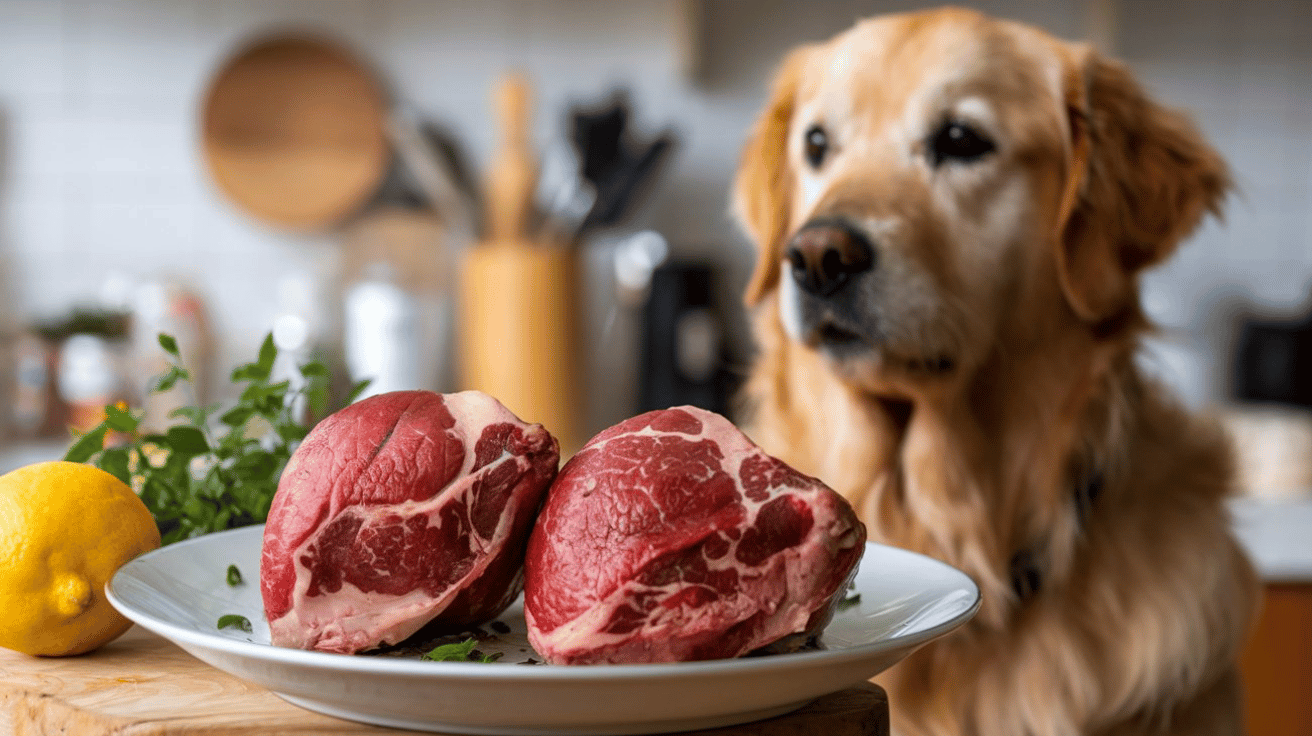
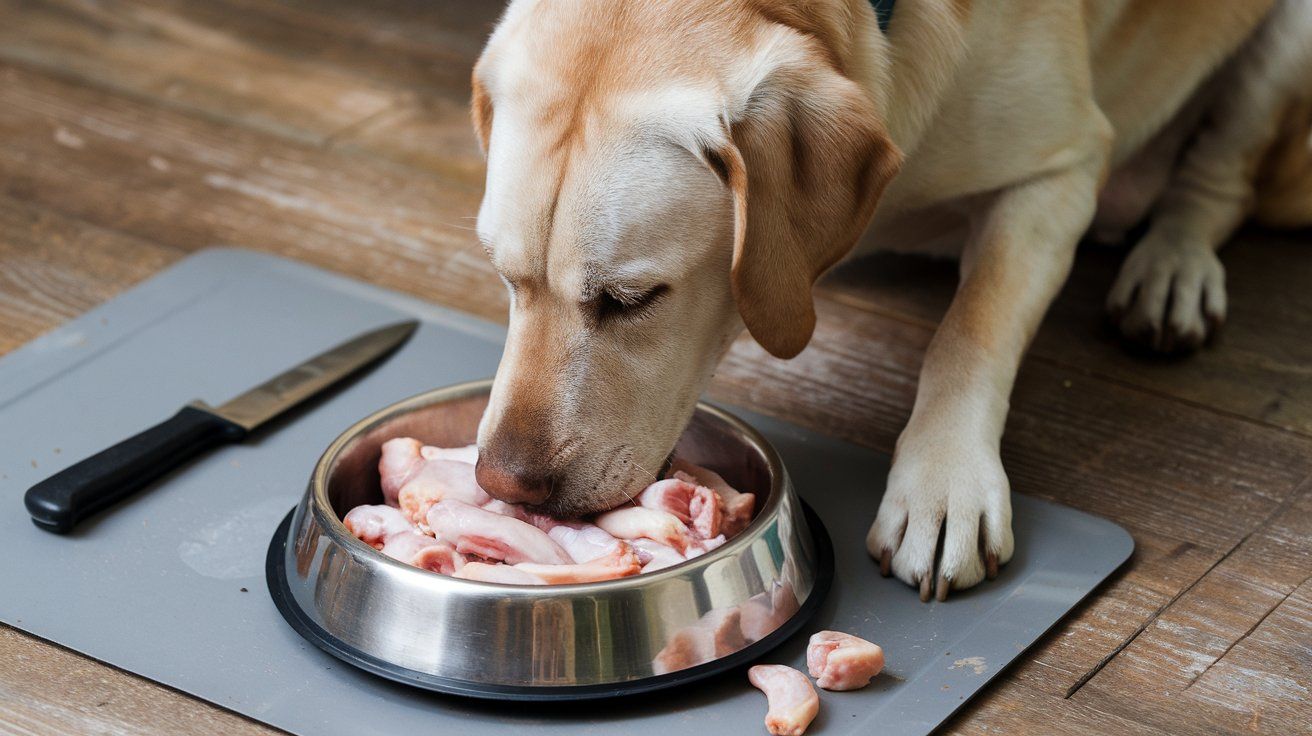

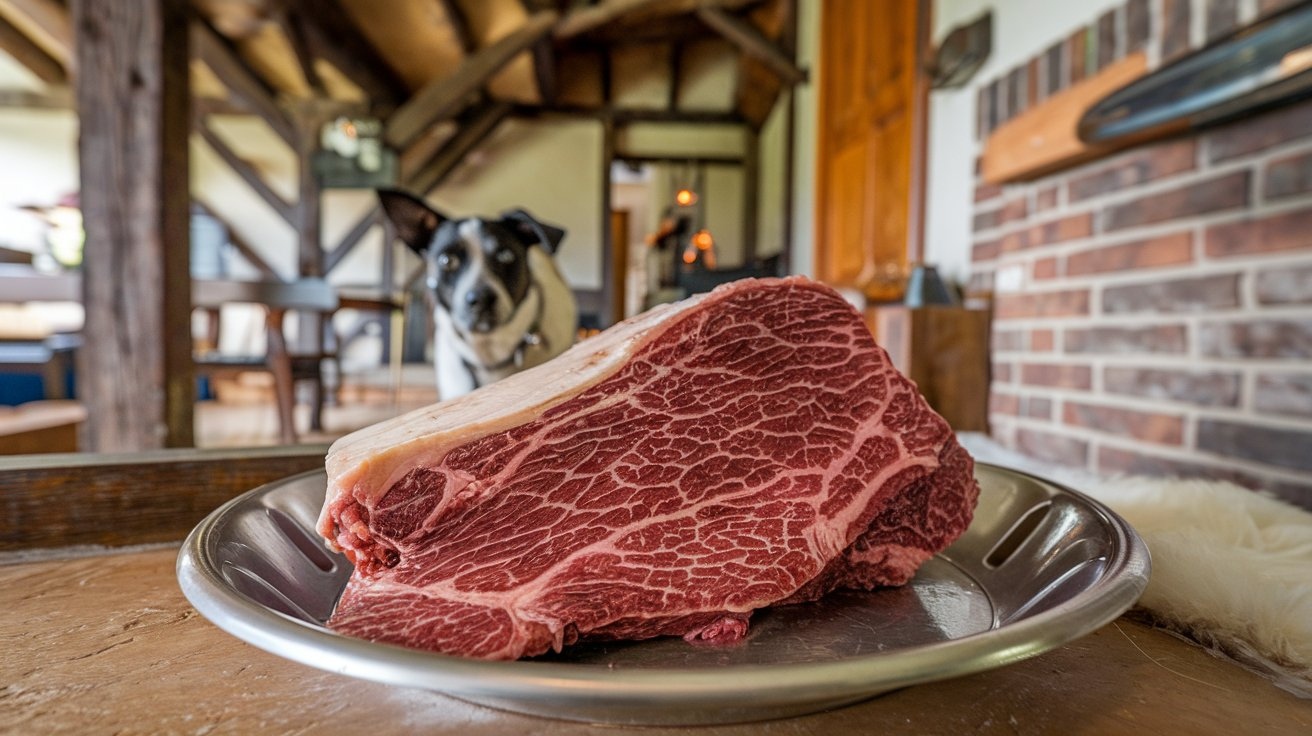

2 thoughts on “Can Dogs Eat Beef Heart? Vets Advice Here”